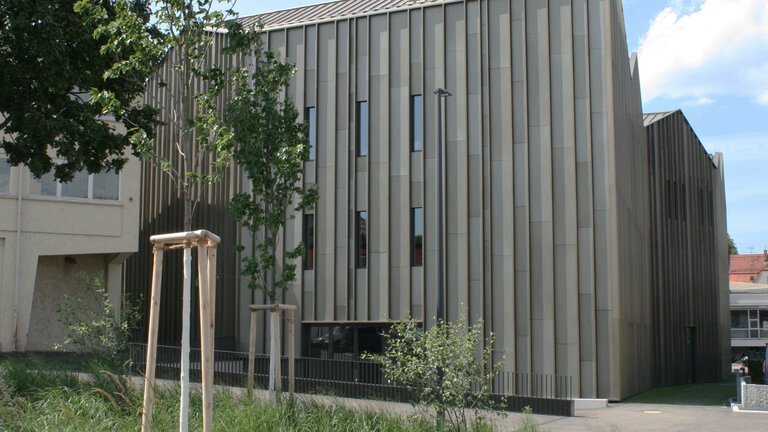With the new building, the university is fulfilling its aspirations with regard to the sustainability of its construction projects, for instance by using energy as efficiently as possible in its building technology. The laboratory building is one of the first DGNB-certified buildings of its kind. Professor Dr Markus Tritschler of the university’s Faculty of Building Services, Energy and Environment commented: ‘As all subjects connected to sustainable construction are taught in the faculty, it was obvious that the course contents should be applied in practice. Students produced all the documentation required to support the application for DGNB certification as part of their theses and project work.’ Dr Tritschler supervised the students, along with Christian Luft, Senior Project Partner at Drees & Sommer.
DGNB auditor Christian Luft, from Drees & Sommer, explained: ‘One of the decisive factors in obtaining the certification was that, apart from the principle of maximum benefit, the main emphasis in the design of the new building was on energy generation and storage.’ Due to the small size of the windows and the highly efficient heat recovery ventilation system, the building’s heating and cooling needs are very low. The combined photovoltaic hybrid system and solar heating system, as well as the building technology, are designed in such a way that they can cover almost the entire energy requirement of the building for heating, cooling, ventilation and lighting.
Innovative Energy Use in the New Laboratory Building
The energy generated during experiments in the laboratories in the form of warm or cool air is stored in a 30-centimeter storage facility, and can be used to supply energy to the building or for other test facilities. For instance, a fuel cell cogeneration unit generates electricity and heat. Both can be used directly in or for the building: the radiator test rig needs heat, and the electricity can be used for pumps or fans. Two adjoining buildings at the university can also be supplied with surplus heat from the storage facility through a local heating network. Peak loads are covered by the district heating connection already in place on the campus. An ice storage facility is to be added to the system in the future. The ceilings in the building are thermo-active building elements, which heat or cool the laboratory areas. Areas from the basement level to the second story are mechanically ventilated.
Research in City Centre Location
The university opened the new laboratory building in Esslingen city center in February 2017. It was designed by architecture firm Knoche Architekten, and is situated directly adjacent to other buildings on the city center campus. The new building reinforces the successful link that exists at Esslingen University of Applied Sciences between applied research and the innovative economic region in which it is located. The client commissioning the project for the three-story building, with its striking, textured aluminium façade and 2,300-square-meter gross floor area, was the State Office of Property and Construction of the German Federal State of Baden-Württemberg.
